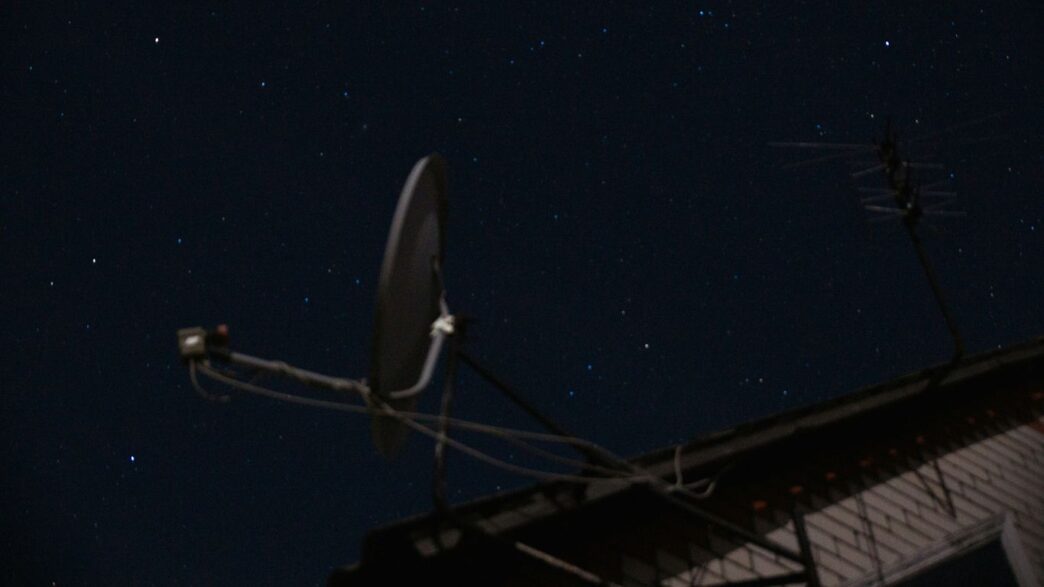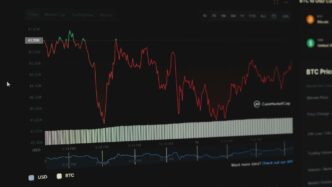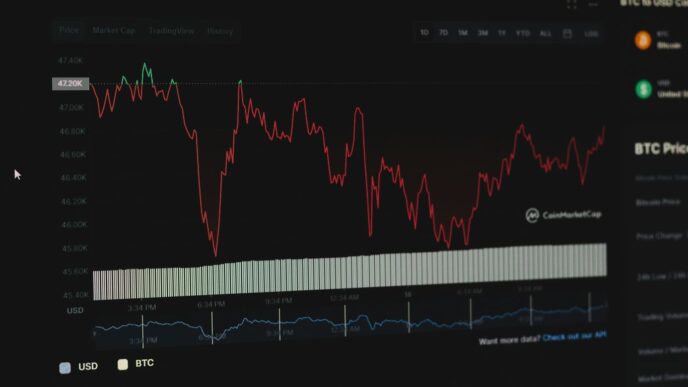Trying to figure out the Starlink internet cost per month in 2025? You’re not alone. With all the different plans and fees, it can get confusing fast. Whether you’re looking at Starlink for your house, your RV, or even your boat, prices and features keep changing. I’ll break it all down so you know exactly what to expect before you sign up. Here’s what you should know about Starlink internet cost per month this year.
Key Takeaways
- Starlink internet cost per month for residential users usually starts at $120, but discounts and special plans can lower it in some areas.
- Roam and mobile plans, including Starlink Mini, come with different monthly prices and data allowances, often starting around $50 for basic use.
- There are one-time equipment and setup costs, but Starlink sometimes offers free hardware if you agree to a year-long contract.
- Your monthly bill might change based on your location, data usage, and if you’re in a high-demand area where congestion charges apply.
- Starlink doesn’t have hard data caps, but there are priority data periods and speed drops if you go over certain limits during peak hours.
Starlink Internet Cost Per Month for Residential Users
If you’re thinking about getting Starlink at home, you’ll notice there are a couple of different options these days, plus some significant discounts floating around. The monthly cost depends on the specific plan and where you live, so let’s break down what you might pay as of late 2025.
Pricing for Residential Plans
Starlink’s standard Residential plan gives you unlimited data with solid speeds (usually 150 Mbps or higher), and is meant to stay fixed at home. In most places, the regular price is $120 a month, but for new users, there’s a noticeable first-year discount:
| Plan | Standard Monthly Price | First-Year Promo | Typical Speeds |
|---|---|---|---|
| Residential (Standard) | $120 | $85 | 135–305 Mbps |
So, for the first 12 months, many new customers only pay $85 per month for standard home internet through Starlink starting at $85 per month for the first year. After that, the price bumps back up unless another promo drops. No contracts—cancel whenever you want.
Residential Lite Discounted Options
If you’re looking for a more affordable route, Starlink offers a "Residential Lite" plan. This isn’t available everywhere, but where it is, it’s notably cheaper. There’s some confusion over the exact discount, since Starlink’s banner advertises $59 per month, but some addresses get an even lower price at checkout—sometimes just $49 monthly for the first year.
Here’s what you can typically expect with Lite:
- Monthly pricing between $49 and $59 (in select locations)
- "Typical download speeds" ranging from 80 to 200 Mbps
- Same hardware as the full Residential plan
That means if you’re in one of the lucky areas for the Lite promotion, you could be paying less than half what early subscribers did.
Regional Price Variations
Starlink’s pricing isn’t set in stone across the board. Depending on demand and region, you might see:
- Discounted rates (like the $85 residential promo) in certain states or cities
- A rare congestion charge (sometimes between $100-$250 one-time) when signing up in high-population areas
- Lite plans available only in select markets, at either $59 or $49 monthly
Three common pricing scenarios:
- $85/month for the first year, then $120/month in most regions
- Residential Lite for $59/month (sometimes as low as $49/month) in some areas
- Full $120/month in high-demand regions, maybe with a sign-up surcharge
If you’re in the market, it’s a good idea to check your specific address on Starlink’s site to see what deal pops up for you. Prices aren’t likely to get much lower than what’s being offered heading into 2026, so you might want to lock in the deal if it’s available.
Starlink Internet Cost Per Month for Roam and Mobile Plans
If you’re always on the move or want reliable internet from your RV, boat, or even your vacation cabin, Starlink’s Roam and mobile plans are definitely worth a close look. In 2025, Starlink has split its offerings into a few different roaming and mobile tiers, with pricing and features designed to fit all sorts of travel needs. Let’s break down what each plan costs and the main things to know before signing up.
Standard Roam Plan Pricing
The basic Starlink Roam plan comes with two main monthly options:
| Plan | Data/Speed | Monthly Cost | Notes |
|---|---|---|---|
| Roam 50GB | 50GB at up to 230 Mbps | $50 | Additional data available |
| Roam Unlimited | Unlimited at up to 230 Mbps | $165 | No overage fees |
A neat thing to point out: there’s a temporary deal for new users in Canada, dropping the Roam plan to only $39 per month (almost half off). You can get more details on Starlink’s Canada discount before it’s gone.
Starlink Mini Plan Details
Starlink’s Mini Plan is a portable, compact solution for travelers who don’t want to haul full equipment. Here are a few highlights:
- Lower overall speeds compared to the main Starlink kit, typically suitable for HD streaming and browsing, but not ideal for heavy gaming or large downloads
- Monthly cost varies, often starting around $50 to $70, depending on the region
- Lightweight dish that’s easier to set up, especially for campers and off-grid users
- No contracts; cancel any time
While the Mini provides slightly less speed, it’s popular for its portability. You can use it wherever you have clear sky view.
Service for Boats and RVs
For people who live or frequently travel in RVs or spend extended time on water, Starlink offers more premium options:
- Starlink for RVs: Unlimited data, typically $165 per month, works while parked anywhere in the coverage area
- Starlink for Boats (Maritime): Priced at around $165 a month as of now, and gives access almost anywhere there’s a clear view of the sky (including when moving, if you purchase the flat high-performance dish)
- Both plans allow you to pause service if you don’t need it during part of the year
Some things to note about mobile Starlink service:
- Priority service is available for extra cost if you need top speeds and reliability while in motion or offshore.
- Plans can be upgraded or downgraded monthly to match your travel schedule.
- Equipment for these plans, especially for in-motion use, may require different antennas or mounts—something worth planning ahead for.
With Starlink, there’s no long-term contract locking you in. You pay monthly and can cancel anytime, making it pretty flexible for travelers. Just be aware: taxes, fees, and hardware costs are separate—and while Starlink works nearly everywhere, extremely remote areas and weather can impact service.
Equipment and Setup Costs Associated with Starlink Service

Setting up Starlink is pretty straightforward, but there are a couple of up-front and potential ongoing costs to know about. Let’s look at what you pay before you can stream, game, or work from anywhere.
One-Time Hardware Fees
The main Starlink expense right away is the one-time hardware charge. This covers the Starlink dish, router, cables, and mount. Here’s what you’ll typically see based on your plan:
| Plan Type | Equipment Cost |
|---|---|
| Residential | $349 |
| Roam (portable use) | $599 |
| Boats/Marine | $2,500 |
| High Performance Dish | $1,500+ |
The $349 covers the basics for your home setup, including the standard installation kit. New Roam customers pay a bit more for portability, and marine users pay the most, reflecting the special tech needed offshore. You can check the latest pricing for residential hardware at Starlink’s standard plan page.
Installation and Shipping Charges
Shipping is not included in the equipment fee. Starlink charges a $50 shipping and handling fee for hardware delivery. Most people set up the gear themselves—no need to schedule a pro—so there’s no required installation charge. Here’s a basic breakdown:
- $50 shipping (for each equipment order)
- No standard installation fee (DIY setup)
- $99 refundable deposit if preordering in an area not yet active
The $99 deposit comes off your final bill, but you might wait a few weeks or months for the service to go live, depending where you live. That deposit makes sense if you’re eager to get on the list before capacity fills up in your region.
Free Equipment Offers with Contracts
Most of Starlink’s plans are month-to-month, but in some states, signing up for a year can get you a deal. As of late 2025, there are offers floating around that give you the Starlink kit for free if you commit to 12 months of service. That swaps the upfront $349 hardware cost for a longer-term agreement. If you were planning to stick with Starlink anyway, this might put a few hundred bucks back in your pocket.
Free equipment promos are not everywhere and might change, so it’s worth checking the current deals before you sign up. The contract locks you in for a year, but if you want to save on hardware and already know Starlink is your best bet, it’s a practical option. It’s particularly handy for people moving to locations without other fast options, or those looking to get a bit more from Starlink’s current promotions before prices or offers shift again.
What Affects Your Monthly Starlink Bill
If you’re thinking about Starlink, or you already have it, you’ve probably noticed the bill isn’t always straightforward. A few factors can nudge your monthly price up or down, depending on where you live, how much you use, and what plan you picked. Here’s the nitty gritty of what can affect the final number on your statement.
Data Priority and Usage Considerations
Starlink generally advertises unlimited data, but that doesn’t mean everyone’s speeds and data experience are the same. Residential plans come with a Priority Access window (typically 7 a.m. to 11 p.m.), and after you use 1TB of priority data in that period, you might see your connection get slowed down, especially during peak hours.
For those on business or higher-tier plans, things shift a bit. There are actual data caps with extra charges for additional priority data. Here’s a quick look at what that means:
| Plan Type | Priority Data Limit | Overage Data Cost |
|---|---|---|
| Residential | 1TB (soft cap) | Speeds reduced after 1TB |
| Local Priority | 50GB – 2TB (hard) | $25 (50GB), $125 (500GB) |
| Global Priority | 50GB – 2TB (hard) | $100 (50GB), $500 (500GB) |
The more you need guaranteed high speeds, the more you might end up paying for these data blocks.
Congestion Charges in High-Demand Areas
SpaceX has introduced a congestion charge that’s basically a fee for living where Starlink’s satellites are extra busy. This can add $100 to your bill if you’re in one of those overloaded regions. It’s not everywhere and could change as more satellites go up, but, for now, folks in dense cities or popular rural zones should keep an eye out for these fees. If you want the details on how infrastructure is keeping up, there’s some interesting info on the expanding internet landscape.
Discounts and Promotions
On the flip side, Starlink occasionally lowers its prices or adds promos for new or existing customers. Sometimes you’ll see residential plan discounts down to $99/month in select regions, or ongoing price cuts for plans with lower speed or priority (like Residential Lite at $80). Plus, there are deals like free equipment if you sign a 12-month contract in certain states. To stay on top of these:
- Check for regional price drops or special offers regularly.
- Look into lower-tier plans if your internet habits are pretty light.
- Watch for any hardware or contract-based discounts.
Bottom line: Your Starlink bill isn’t perfectly fixed; it can shift month-to-month depending on your usage, your location, and any special deals you snag along the way.
Starlink’s Data Policies and Performance Features
Starlink’s data rules and how it handles speed stand out compared to a lot of other providers. It’s worth getting the full picture so you know what to expect on your bill and your connection.
Unlimited Data and Priority Access Periods
Starlink grabs attention with its no hard data caps policy for most regular plans. This means, generally, you’re not going to get cut off or slapped with excessive fees for using more data than expected. However, there’s a catch many folks don’t notice at first:
- Each month, users get a 1TB Priority Access period between 7 a.m. and 11 p.m. After crossing this 1TB mark, you’ll still have service, but expect speeds to drop, especially during those peak day hours.
- During late-night and early morning hours (outside the Priority window), Starlink is more relaxed about usage, and throttling is much less likely.
- With Priority and business-focused plans, there are much stricter data tiers. You can buy more high-speed data if you need it, but costs add up fast.
Here’s a quick breakdown of what this looks like for Priority plan customers:
| Plan Type | High-Speed Data Limit | Overage Options |
|---|---|---|
| Residential | 1TB/month (7a–11p) | Slows after limit, no overage purchases |
| Local Priority | 50GB – 2TB/month | Buy 50GB for $25, 500GB for $125 |
| Global Priority | 50GB – 2TB/month | Buy 50GB for $100, 500GB for $500 |
Speed Expectations for Each Plan
The speed you get depends a lot on which plan you pay for and where you live. For most folks:
- Residential Starlink plans typically offer download speeds between 45 Mbps and 220 Mbps, with some users seeing bursts even higher.
- Roam and Starlink Mini packages usually clock in at the lower end, ideal for web browsing and HD streaming but not so hot for 4K video or high-stakes gaming.
- Premium business users can see faster connections, especially with improved hardware—but you’ll be paying a big premium for it.
- Latency is a bright spot for Starlink, with U.S. customers usually getting around median peak-hour latency of 25.7 milliseconds. For most real-time work and Zoom meetings, that’s a big win over old-school satellite.
Comparisons with Data Caps from Competitors
If you’ve shopped satellite internet before, you know most plans aren’t really unlimited. Here’s how Starlink stacks up against some of the main players:
- Viasat: Claims unlimited data, but after 850GB per month, speed drops drastically. Latency is often 600ms or more, which doesn’t cut it for gaming.
- Hughesnet: Known for low caps (say, 100GB), and slowdowns that can make even YouTube crawl.
- Starlink Priority plans: Offer flexible data tiers, but overage fees are a real consideration for heavy users.
So, the big takeaway? Starlink offers unmatched flexibility for most users, but it’s still smart to track how much you’re using each month to avoid those peak-hour slowdowns. And if you’re thinking of switching, remember that nobody else is offering anything close to Starlink’s current mix of speed, data, and price in the satellite space.
Comparing Starlink Internet Cost Per Month to Alternatives
Let’s get real about how much you’ll pay for Starlink versus the other big satellite internet names, Hughesnet and Viasat, plus new options on the way like Amazon’s Project Kuiper. Pricing and features can make or break your choice, especially out in the countryside or on the road where the local cable company forgot you exist.
How Starlink Stacks Up to Hughesnet and Viasat
There are a lot of numbers flying around, so here’s a quick look at how the main satellite internet options compare on price and typical performance:
| Provider | Starting Monthly Price | Typical Download Speed | Latency | Data Cap |
|---|---|---|---|---|
| Starlink | $120 | Up to 220 Mbps | 25-50 ms | 1 TB Priority, no hard cap |
| Hughesnet | $65 | Up to 100 Mbps | 600+ ms | 100-200 GB |
| Viasat | $99 ($130 after 3 mo) | Up to 150 Mbps | 600+ ms | 850 GB soft cap |
Starlink beats Viasat and Hughesnet for speed and latency—even if it’s a little pricier upfront. Here’s why folks are willing to pay for Starlink:
- No contracts—cancel anytime.
- Truly usable speeds for video calls, streaming, even some gaming.
- No hard data caps, just slower speeds if you go past your monthly Priority Data.
On the other hand, Hughesnet and Viasat start a bit cheaper, but you’ll run into slowdowns and overage fees quickly if your household blows through the cap. Latency also makes online gaming or video calls feel clunky.
Examining Amazon Project Kuiper and New Entrants
Amazon’s Project Kuiper is still rolling out, and as of now, real user data is limited. Match-ups to watch for:
- Project Kuiper is expected to price aggressively to lure new customers, possibly below current Starlink rates.
- Kuiper is building its own satellites for low-latency service, aiming to rival Starlink’s fast speeds.
- Other local or regional providers may appear soon, especially for rural areas or on-the-go needs.
As more players jump into the game, there could be new deals or lower pricing, but most likely not until later in 2025 or 2026.
Cost-Effectiveness for Different User Needs
Which service makes sense depends on what you actually do online and how mobile you are:
- Starlink: Best pick for homes, rural areas, frequent travelers, or RVers who need reliable, fast internet and don’t want to babysit a data cap.
- Viasat or Hughesnet: Still workable if your monthly budget is tight, you’re a light user, or Starlink isn’t available where you live.
- Amazon Kuiper (soon): Keep an eye out if you want to test the latest tech or are waiting for an introductory price.
In the end, most people paying for Starlink say it’s worth the money, especially when the alternative is slow internet with limits that shut you down halfway through the month. Double-check what’s available on your street and think about how much internet you use before signing up.
How to Maximize Value When Paying Starlink Internet Cost Per Month
Figuring out how to get the most from your Starlink bill isn’t complicated, but you have to pay attention to the options, deals, and how your own internet use fits with their newer plans.
Choosing the Best Plan for Your Needs
A lot of folks jump into the standard Starlink plan without looking at the alternatives. Picking the right plan is the easiest way to save money and still get what you want out of your service. Here’s how to decide:
- If you mostly use the internet for browsing, streaming, or working from home, the regular Residential plan (typically $120/month) usually has what you need.
- For those on a tight budget, check if the Residential Lite or Roam 50GB plans are available in your area. These cost around $80/month but come with speed reductions and sometimes deprioritized data.
- Mobile options like Roam or Starlink Mini work well for travelers and RV owners. Pricing sits in the $150/month range, but some find the compact Mini setup worth it for life on the road.
| Plan Name | Typical Monthly Cost | Speed Range | Data Priority |
|---|---|---|---|
| Residential | $120 | 100–220 Mbps | High (with some limits) |
| Residential Lite | $80 | 50–100 Mbps | Deprioritized |
| Roam/Mobile | $150 | 50–150 Mbps | Lower during congestion |
| Roam 50GB Mini | $80 | ~50 Mbps | Strict data prioritization |
If you’re feeling uncertain, comparing Starlink to Hughesnet or Viasat makes sense, too. Just check actual plan speeds and prices before deciding what lines up with your needs.
Taking Advantage of Ongoing Deals
Starlink makes it possible to save some cash if you’re willing to look for deals or try alternate plans. Here are reliable ways to keep your costs down:
- Watch for free hardware promotions, especially if you’re open to a 12-month contract instead of month-to-month billing. Sometimes the up-front savings are significant—current hardware runs close to $350 for residential.
- If you’re not a heavy user, selecting a Lite or capped-data option means lower bills with a tradeoff in speed. Some plans aren’t offered everywhere, so always double-check local availability.
- Occasionally, Starlink offers trials or money-back guarantees for new signups, letting you test things out risk-free for 30 days.
Monitoring Changes in Pricing and Plan Features
Starlink does update its plans several times a year, so keeping an eye on the details matters if you want to avoid surprises:
- Be alert for price hikes—these sometimes happen, especially in high-demand locations or following new feature rollouts.
- Track your usage if you’re on a capped plan, so you’re not caught by speed slowdowns during the day’s priority window (usually during peak hours).
- Check your bill every month for added congestion fees. In crowded regions, Starlink sometimes adds a $100 charge if too many people are online at once.
It might seem a little tedious, but staying organized with your tech spending is just one more tip for managing your internet and device costs. The result? You only pay for the service and speeds you actually need, and nothing more.
Wrapping Up: Is Starlink Worth It in 2025?
So, after looking at all the numbers and options, Starlink’s monthly cost in 2025 really depends on what you need and where you live. The standard residential plan is still around $120 a month, but there are cheaper options like Residential Lite if you don’t need top speeds. Roam plans are a bit more for folks who want internet on the go, and the equipment fees are still a thing, unless you catch one of those deals with free hardware for signing a contract. There aren’t a ton of hidden fees, which is nice, but you might see a congestion charge if you live in a busy area. Compared to other satellite internet providers, Starlink usually comes out ahead on speed and data, but it’s not always the cheapest. If you live somewhere with no good cable or fiber options, Starlink is probably your best bet. But if you have other choices, it’s worth comparing prices and speeds before you decide. Either way, it’s good to keep an eye out for new deals and changes, since the satellite internet world is always shifting.
Frequently Asked Questions
How much does Starlink internet cost each month in 2025?
For most homes, Starlink internet starts at $120 per month. Some areas offer a cheaper Residential Lite plan, which can be as low as $80 per month. Roam and mobile plans usually cost more, starting at $150 per month.
Are there any extra fees when signing up for Starlink?
Yes, you usually pay a one-time hardware fee, which is $349 for home users and $599 for Roam customers. There’s also a shipping fee of about $50. Sometimes, there are special deals that can lower or even remove these costs if you agree to a contract.
Does Starlink have data limits?
Starlink does not have hard data caps. You can use as much data as you want, but there is a Priority Access period where you get the best speeds up to a certain amount of data. After that, your speeds might slow down during busy times.
How fast is Starlink internet?
Starlink can reach download speeds up to 220 Mbps and sometimes even higher, depending on your plan and where you live. Most users see speeds good enough for streaming, gaming, and video calls.
Is there a contract required for Starlink service?
No, most Starlink plans do not require a contract. You pay month-to-month. However, if you want to save money on equipment, you might need to sign a 12-month agreement.
How does Starlink compare to other satellite internet options?
Starlink is usually faster and has lower delay (latency) than other satellite providers like Hughesnet or Viasat. Starlink also has fewer data limits. New competitors, like Amazon’s Project Kuiper, are coming soon, so it’s smart to check for updates and compare plans regularly.














